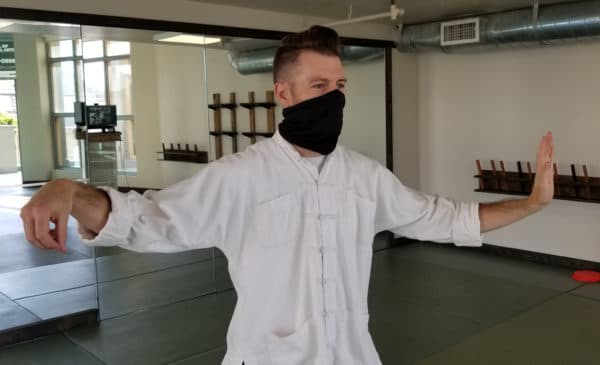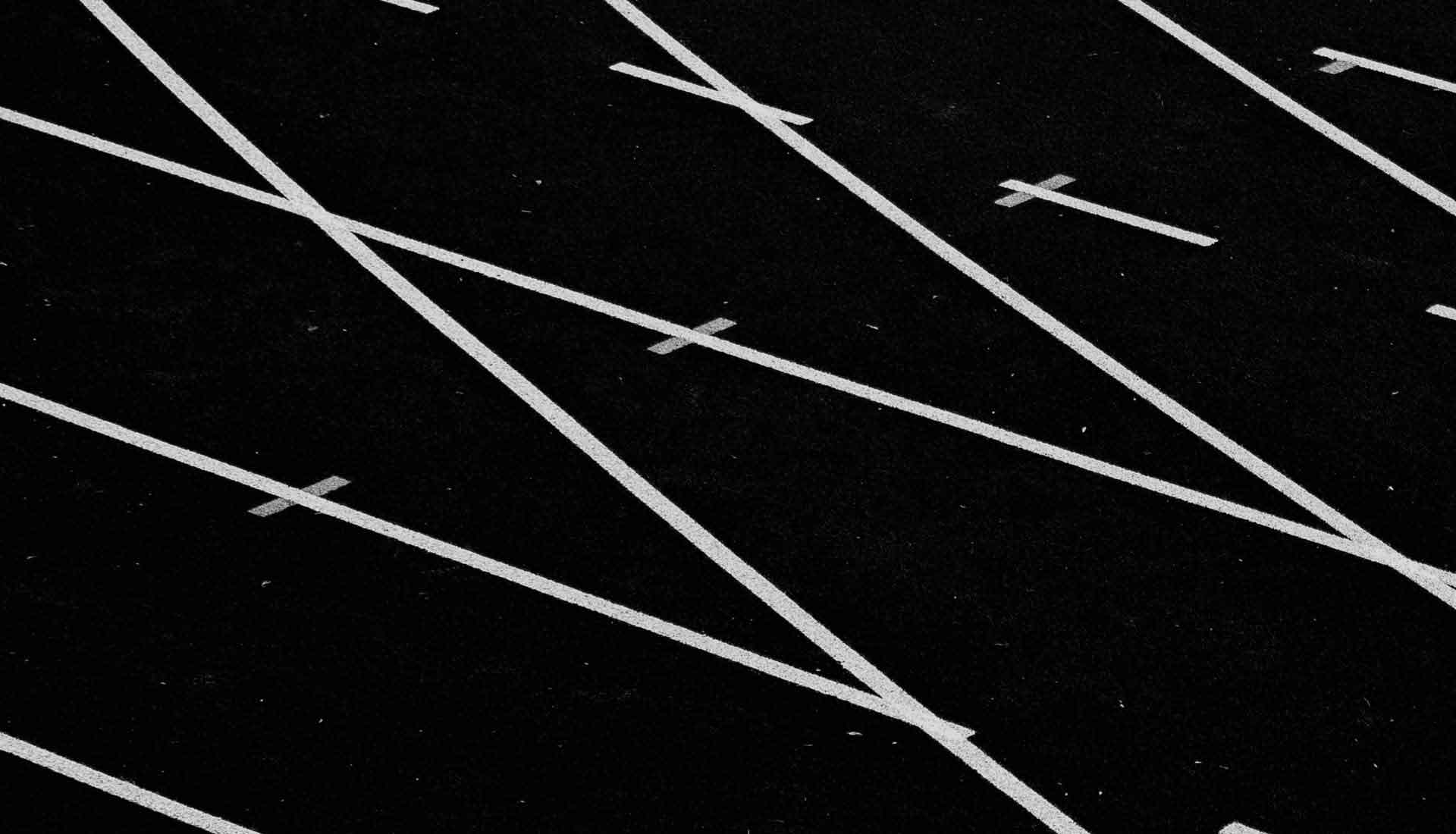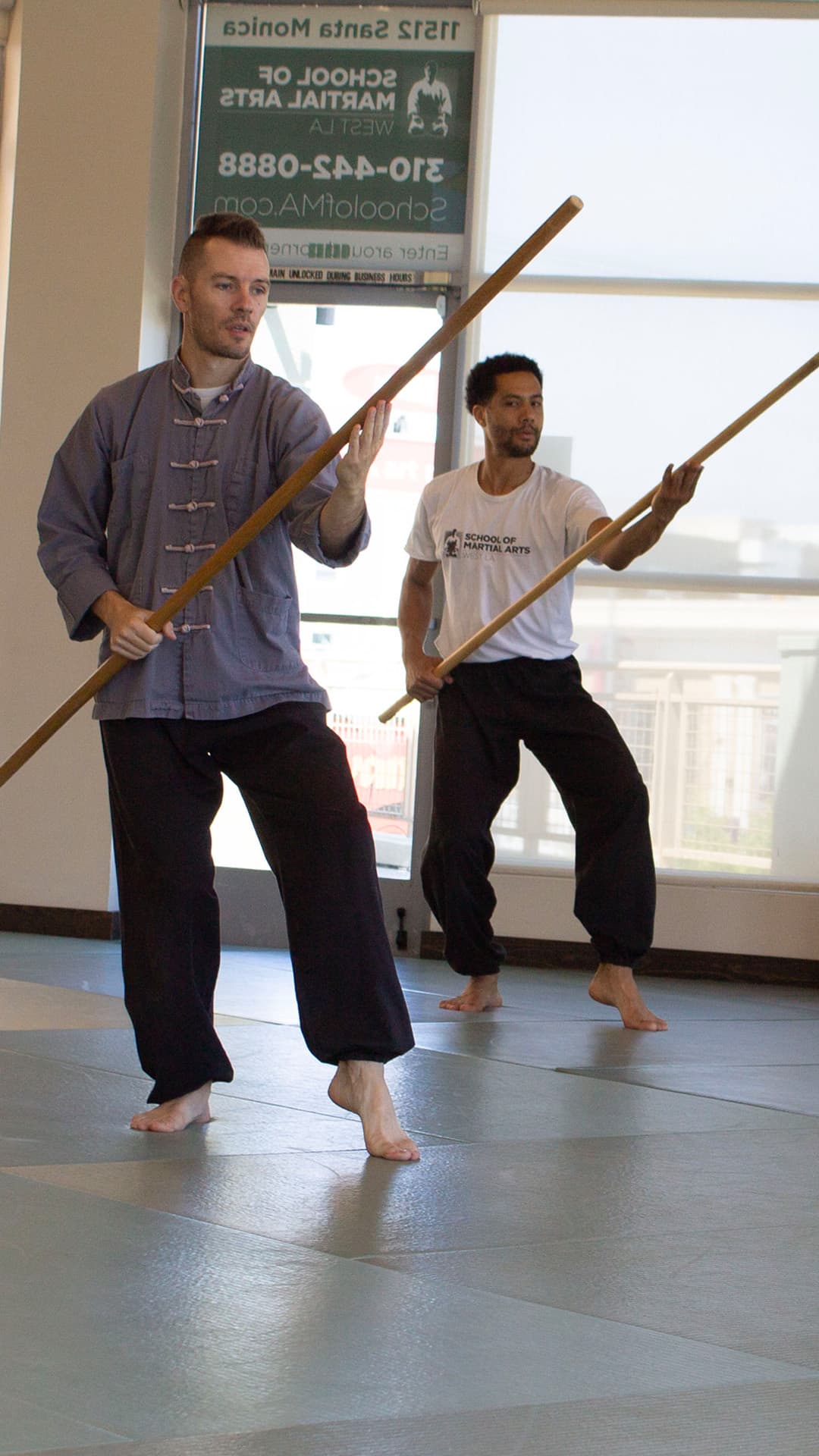 Returning to the dojo means breathing with a mask, and some of us find that difficult. What can happen is a feeling of breathlessness, of not being able to breathe enough. This feeling is called dyspnea by scientists and clinicians, and dyspnea comes from the brain rather than not getting enough air. The feeling is triggered by higher than normal levels of carbon dioxide, which we may get when the mask makes us breathe in the same air we breathed out. As we learned at school, we breathe in oxygen and breathe out carbon dioxide, so when the breathed-out, exhaled air gets trapped in the mask, the breathed-in, inhaled air has a little more carbon dioxide than usual. Our bodies are wired to alarm when carbon dioxide levels get high, much more so than when oxygen levels get low. Part of the high carbon dioxide alarm system are brain areas that trigger dyspnea, including the mid-cingulate which helps generate stressful emotion. Even a little extra carbon dioxide can trigger these brain areas, and they can remain in an “alarm on” state even after we start calming our breathing down. This means we can get a feeling of being out of breath, which after a few 10’s of seconds may start to make us feel panicky.
Returning to the dojo means breathing with a mask, and some of us find that difficult. What can happen is a feeling of breathlessness, of not being able to breathe enough. This feeling is called dyspnea by scientists and clinicians, and dyspnea comes from the brain rather than not getting enough air. The feeling is triggered by higher than normal levels of carbon dioxide, which we may get when the mask makes us breathe in the same air we breathed out. As we learned at school, we breathe in oxygen and breathe out carbon dioxide, so when the breathed-out, exhaled air gets trapped in the mask, the breathed-in, inhaled air has a little more carbon dioxide than usual. Our bodies are wired to alarm when carbon dioxide levels get high, much more so than when oxygen levels get low. Part of the high carbon dioxide alarm system are brain areas that trigger dyspnea, including the mid-cingulate which helps generate stressful emotion. Even a little extra carbon dioxide can trigger these brain areas, and they can remain in an “alarm on” state even after we start calming our breathing down. This means we can get a feeling of being out of breath, which after a few 10’s of seconds may start to make us feel panicky.
In other words, the mask itself is not the problem. You can test this yourself–when you first put a mask on your face, breath in deeply; you won’t feel out of breath, as you have not yet breathed out carbon dioxide.
What to do about this? Despite feeling panicky, there is no physiological reason to panic. If you are breathing in and out, your body is getting enough oxygen. One practice that helps is paying attention to the movement of air in and out of your lungs. Because the mid-cingulate is a higher brain area, as opposed to a more primitive emotion area like the amygdala, it can to some degree be controlled by you manipulating your awareness. In other words, just by shifting your awareness you can turn off the alarm. Focusing on the breath then helps settle the mid-cingulate, reassures our thinking brain that our body is getting enough oxygen, and supports our martial arts practice.
If your start feeling breathless, bring your awareness back to the breath.
Paul Macey, 30th June 2020



Sylvia Dana
Thank you Sifu for the explanation. I’m having a hard time wearing the masks and I remove it every so often to catch my breath.
Now I know what to do and I’ll start practicing first thing in the morning.
All the best, Happy 4th of July!
Julie LaPorte
Thank you, Mr Macey! Great info.
The feeling I get is very similar to my claustrophobic episodes, which supports these facts! I love the scientific explanation, much gratitude!
Lia
Yes! Simply taking a deep breath, and being mindful of the breath (ie remembering to breathe) really helps. People have completed marathons wearing a mask.
“It’s just that masks are terribly comfortable. I think everyone will be wearing them in the future.” (The PB)